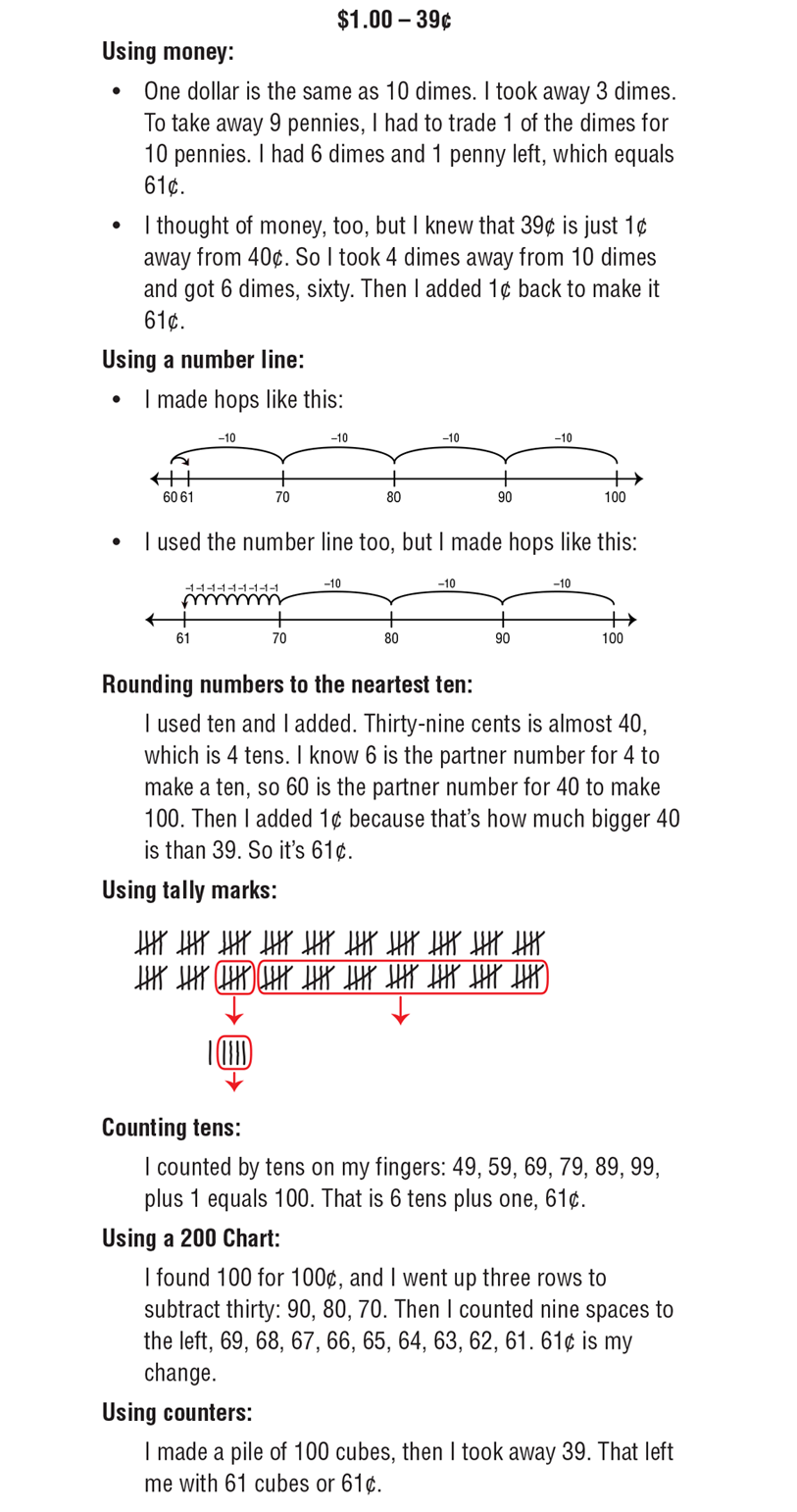Subtraction Seminar
Est. Class Sessions: 2–3Developing the Lesson
Part 2: Emphasize Different Subtraction Strategies
Think about Subtraction. Display the Thinking about Subtraction Master and the Subtraction Strategies Chart. Tell students to imagine that they have a dollar or 100 cents to spend and they can choose one item to purchase. Ask a student volunteer to select an item and have students work in pairs to solve the problem using one of the strategies on the chart or any other strategy that makes sense to them.
Use the speech balloons on the Master to record the thinking of individual students. Add any new strategies to the Subtraction Strategies Chart. Discuss whether each student’s answer is reasonable using estimation strategies. For example, to estimate the difference between $1.00 and 79¢, students might use the friendly numbers 100 − 80 to estimate a difference of 20. See Figure 2 for some solution strategies that might be suggested for buying a 39¢ item.
Have a student volunteer select another item to purchase on the Thinking about Subtraction Master and repeat the process. Encourage students to try a strategy from the chart that they have not used before. Add any new strategies to the chart.
Compare the strategies by asking questions similar to the following:
Try a Variety of Strategies. Encourage students to use the variety of strategies on the Subtraction Strategies Chart to solve these problems:
| 16 | 75 | 40 | 51 |
| − 8 | − 39 | − 23 | − 17 |
Instruct students to check each of their solutions by using a second strategy or by estimating. Use the Sample Dialog to guide your discussion of using efficient strategies and checking subtraction problems for reasonable answers.














